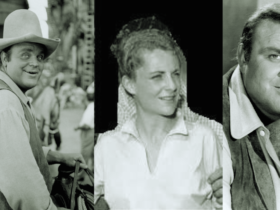The digital world is home to many stories—some uplifting, some controversial, and others steeped in mystery. Sandra Orlow is one such name that brings up curiosity and intrigue. Known to some as a digital model, her name has appeared across forums, discussion boards, and social media platforms, capturing the attention of countless people over the years. Yet, despite this apparent Fame, the real story of Sandra Orlow remains mysterious and ambiguous. Who is Sandra Orlow? How did she gain her digital notoriety, and why has her name become a topic of discussion even years after she faded from the public eye?
In this article, we delve into Sandra Orlow’s rise, the nature of her online presence, and the possible reasons behind her disappearance from the internet. By examining her journey and the myths surrounding her, we aim to provide a clearer picture of her story and why people are still curious about her today.
Who Is Sandra Orlow?
Sandra Orlow is often recognized as a digital figure who rose to prominence through a series of photoshoots that appeared on various online platforms during the early 2000s. However, the information surrounding her identity, background, and personal life is scarce, adding to the intrigue. Most of what’s known about her comes from fragmented sources online, with limited details about her upbringing or real-life background.
From what can be pieced together, Sandra Orlow appeared online when digital media and social platforms began to increase. Her early photographs showcased a young individual, and they were often shared within modelling forums and websites focused on artistic or amateur photography. As a result, she quickly gained a following, though not in a conventional sense. Unlike mainstream models, which work with established agencies and make public appearances, Orlow’s visibility remained confined to the virtual space. This detachment from the traditional modelling industry is likely one reason so much mystery surrounds her.

Rise to Fame in the Early 2000s Internet Culture.
Sandra Orlow’s Fame can be attributed to the unique context of the early 2000s internet. The internet was a relatively new phenomenon at that time, and digital communities often formed around niche interests and shared media. As we know it today, social media didn’t yet exist, and much of online interaction took place on forums, bulletin boards, and specialized websites. People connected over shared hobbies, art, and entertainment, creating communities around specific interests.
Orlow’s images were distributed primarily within these niche communities. The style of photography she appeared in was often described as natural, candid, and sometimes artistic, resonating with specific audiences who appreciated the style. The combination of amateur aesthetics and her youth became appealing to specific internet circles, and her following grew. Over time, she became a recognizable name within these circles, with fans and followers discussing her images and wondering about her life.
However, this early internet fame was subject to controversy. As her popularity grew, debates arose about the appropriateness of her images, the ethics of sharing them, and the impact that internet fame could have on a young person. These discussions foreshadowed some more significant debates about privacy, exploitation, and digital rights that would become more prominent in later years.
Controversies and Ethical Debates Surrounding Her Online Presence
Sandra Orlow’s rise to Fame didn’t come without ethical concerns. As a young model, her images quickly became a subject of debate. Many questioned the morality and legality of sharing her photographs, especially considering her age. The early internet wasn’t well-regulated, and it lacked the guidelines we have today regarding privacy and handling sensitive material. This absence of regulation meant that Orlow’s images circulated widely without much oversight.
This circulation led to serious concerns. Some argued that sharing images of young models, even in an artistic context, could cross ethical boundaries and potentially exploit them. Others defended the images as artistic and harmless, viewing them as part of a legitimate sub-genre of photography. Nonetheless, Sandra Orlow’s case symbolized the more significant ethical discussions surrounding privacy and consent in the digital age.
As time passed, the conversation around Orlow’s images only grew more intense, with individuals questioning whether she had willingly participated in the sharing of her images or whether they had been distributed without her complete understanding of the potential consequences. This discussion has since become relevant in light of modern conversations about digital privacy, particularly for young people whose online presence can have lasting implications.

The Mystery of Sandra Orlow’s Disappearance from the Public Eye
After a few years of considerable online presence, Sandra Orlow seemingly vanished from the internet. The photos stopped circulating, and any new information or sightings of her became increasingly rare. Her sudden disappearance was surprising for someone who had gained a substantial following, leading many to speculate about her reasons for stepping back from the spotlight.
There are several theories about why Sandra Orlow withdrew from the public eye. One possibility is that she or her family recognized the potential dangers and ethical implications of her online presence and chose to take control of her digital footprint. It’s also possible that she wanted to live a more private life and distance herself from the internet persona created around her.
Another theory is that the websites hosting her images faced legal pressures or ethical scrutiny and decided to remove her content. As the internet evolved and became more regulated, platforms may have avoided legal complications by erasing certain types of content, particularly those involving young models. This removal and Orlow’s possible desire for privacy could explain her disappearance.
Today, finding traces of Sandra Orlow’s online presence is problematic. While there are still mentions of her name on older forums and archives, her images and most information about her have primarily vanished, replaced by curiosity and speculation. In many ways, Sandra Orlow’s story has become a cautionary tale about the permanence of digital media and the importance of privacy in a world where information can be easily spread and difficult to erase.
What Happened to Sandra Orlow? Speculations and Theories
The lack of clear information about Sandra Orlow’s life has led to numerous theories and speculations. Some internet users have suggested that she may have taken legal steps to protect her privacy, ensuring that her images were removed from major platforms. Others speculate that she moved on, transitioning into adulthood and possibly pursuing a career or lifestyle away from the public eye.
There are also rumours that Sandra Orlow may have taken a new identity or changed her name to fully dissociate from her internet persona. Such an approach would allow her to lead a more private life without constantly being recognized or associated with her past. Given the attention her images received during her youth, it’s understandable that she might want to protect herself from further scrutiny.
Ultimately, the truth remains unknown, and unless Sandra Orlow decides to share her story, her current life and whereabouts may remain a mystery. This lack of information only adds to the fascination as people wonder about the young girl who became an unexpected internet figure and disappeared without a trace.
Lessons from Sandra Orlow’s Story in the Age of Digital Privacy
Sandra Orlow’s story poignantly reminds us of digital privacy’s complexities, especially for young individuals who may not fully grasp the long-term consequences of online Fame. In the early 2000s, the internet was a less regulated space, and there needed to be more awareness of how an online presence could impact one’s future. Today, however, society better understands the need to protect young people’s privacy and the importance of consent in digital media.
Orlow’s journey highlights the challenges of internet fame and the importance of setting boundaries around personal information. It also underscores the responsibility of content creators, platforms, and communities to handle sensitive material with care and respect. Her story serves as a case study of the potential dangers of online Fame, particularly for minors, and the lasting effects a digital footprint can have on an individual’s life.
Conclusion
Sandra Orlow’s rise to Fame and subsequent disappearance from the public eye remains one of the internet’s lingering mysteries. Her story reflects the unique landscape of the early internet and the ethical complexities that arise when young individuals become digital figures. While her current life is shrouded in mystery, her legacy is a reminder of the importance of privacy, consent, and ethical standards in the digital age.
As technology evolves, Sandra Orlow’s story remains relevant, shedding light on our responsibilities in handling information online. In an era where digital footprints can have lasting consequences, her experience reminds her to approach internet fame cautiously and respect personal boundaries. Whether or not Sandra Orlow chooses to reveal her story in the future, her journey has impacted the conversations around digital privacy and ethics today.
Do Read: Evecancel.Site: Exploring Key Features and User Benefits











Got a Questions?
Find us on Socials or Contact us and we’ll get back to you as soon as possible.